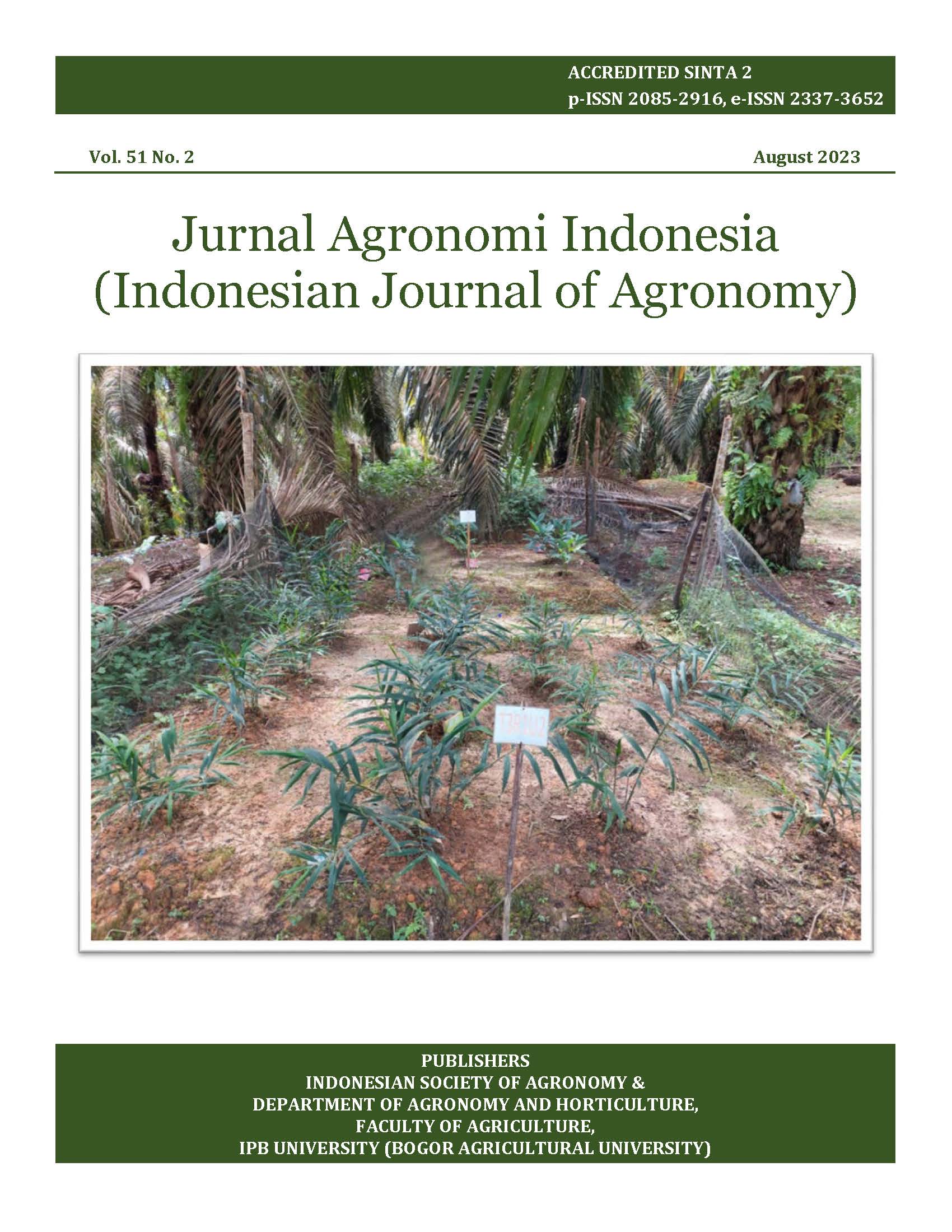Agronomic assessment of three spice plants as understorey crops in oil palm (Elaeis guineensis Jacq.) plantation
Abstract
Utilization of land with intercrop plants can support the productivity of the land. The wide spacing of oil palm plants can be used to plant intercrops. Spice plants such as red ginger, turmeric, and cardamom are examples of intercropping plants under the shade of oil palm. This study aimed to determine the adaptability of red ginger, turmeric, and cardamom as understorey plants of different oil palm ages. The research was carried out from February to November 2021 at Sekernan, Muaro Jambi, Jambi. The study consisted of three experiments to investigate three spice plants. Each experiment used a randomized complete block design (RCBD) with oil palm ages as treatments, namely 0, 5, 10, 15, and 20 years. Variables observed included light intensity, plant height, tiller number, leaf number, and rhizome weight. The red ginger and turmeric were considered as adaptive plants to understorey conditions due to the yield of > 60% in 15-year-old oil palm trees than those grown in non-shade conditions. Production levels of red ginger and turmeric were determined by the number of tillers and leaves. The cardamom plant under oil palm shade produced a better yield than that in control. This implies that all three spices are suitable as intercrop plants under oil palm plantations.
Keywords: cardamom; low light intensity; red ginger; shade stands; turmeric













